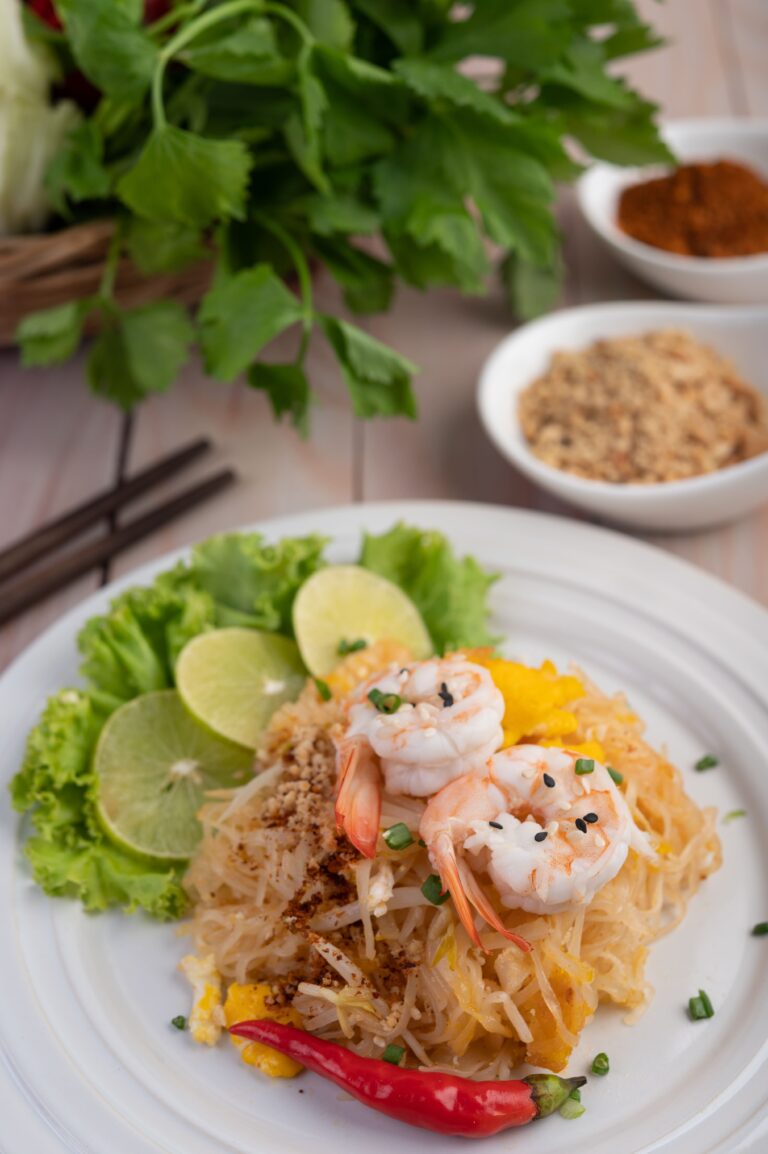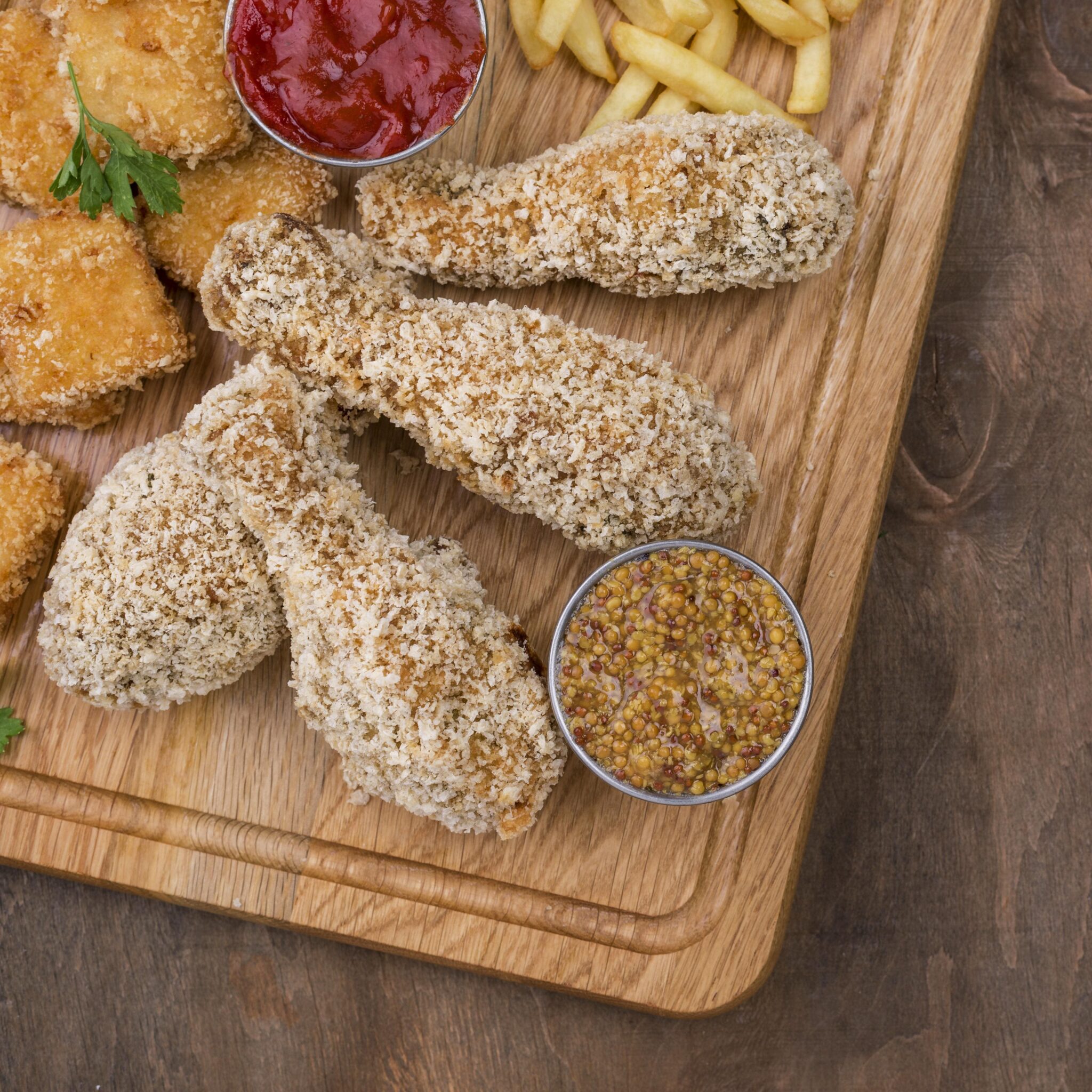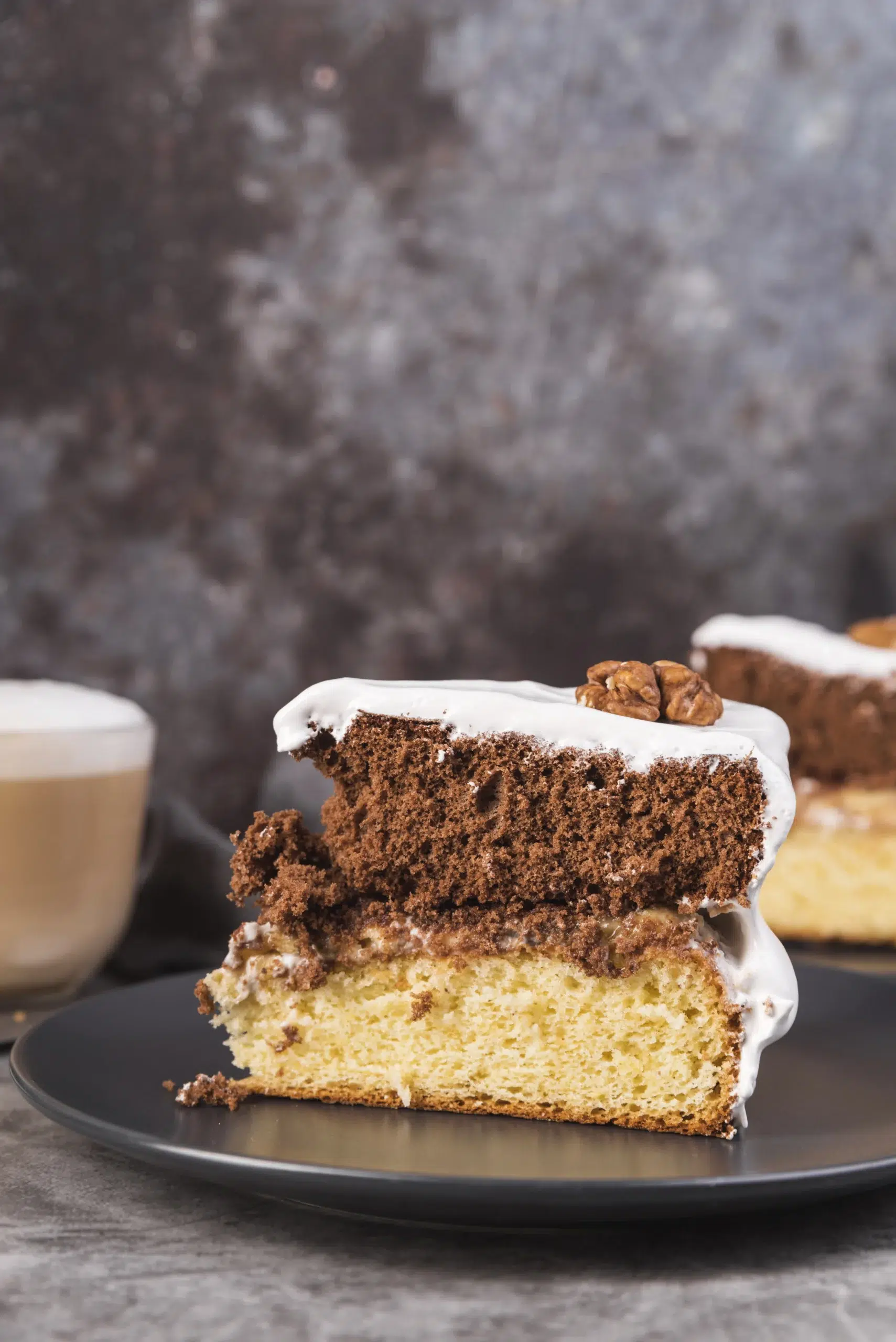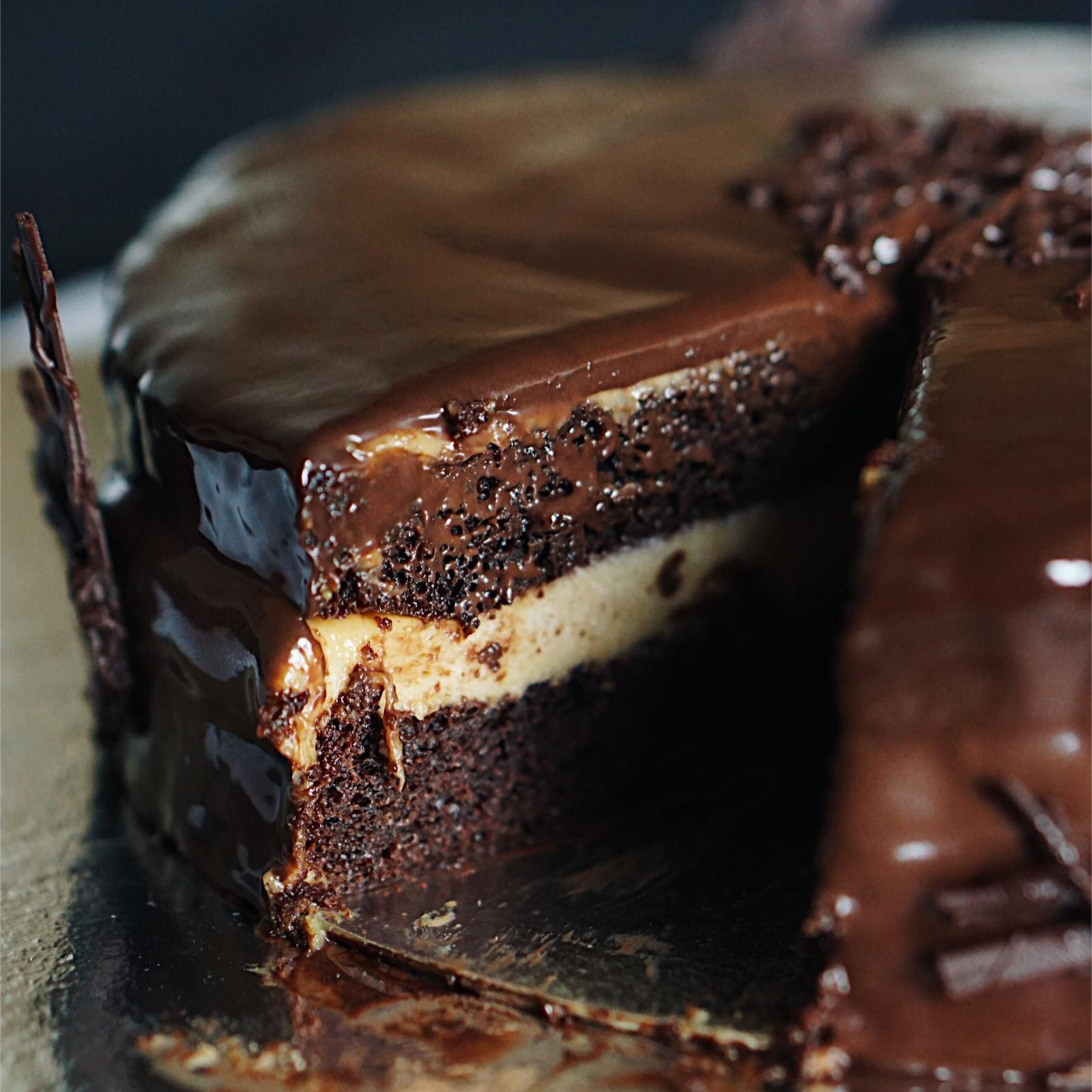Introduction
Pad Thai is one of Thailand’s most iconic dishes, loved by food enthusiasts worldwide for its harmonious blend of flavors and textures. Originating in the streets of Thailand, this stir-fried noodle dish has transcended cultural boundaries to become a staple in Thai restaurants across the globe. Its perfect combination of sweet, sour, salty, and umami flavors makes it a universally beloved favorite.
Despite its seemingly complex flavor profile, Pad Thai is surprisingly simple to prepare, making it an ideal dish for those new to cooking or exploring Thai cuisine. This recipe is specifically designed for beginners, focusing on accessible ingredients and straightforward steps that anyone can follow, even without prior experience in the kitchen.
What sets Pad Thai apart is its incredible versatility. Whether you prefer the rich taste of shrimp, the comforting heartiness of chicken, or the plant-based appeal of tofu, Pad Thai can be easily adapted to suit your dietary preferences. It’s a dish that feels indulgent while still offering a balance of wholesome ingredients, ensuring it’s both delicious and nourishing.
This blog post will walk you through everything you need to know to create the perfect Pad Thai from scratch. With just a handful of essential ingredients and a few helpful tips, you’ll be able to whip up a flavorful, restaurant-quality dish in your own kitchen. By the end, you’ll not only have a tasty meal to enjoy but also a newfound confidence in tackling other Thai recipes.
Let’s dive into the flavorful world of Pad Thai and discover why it’s one of the most beloved dishes in Thai cuisine!
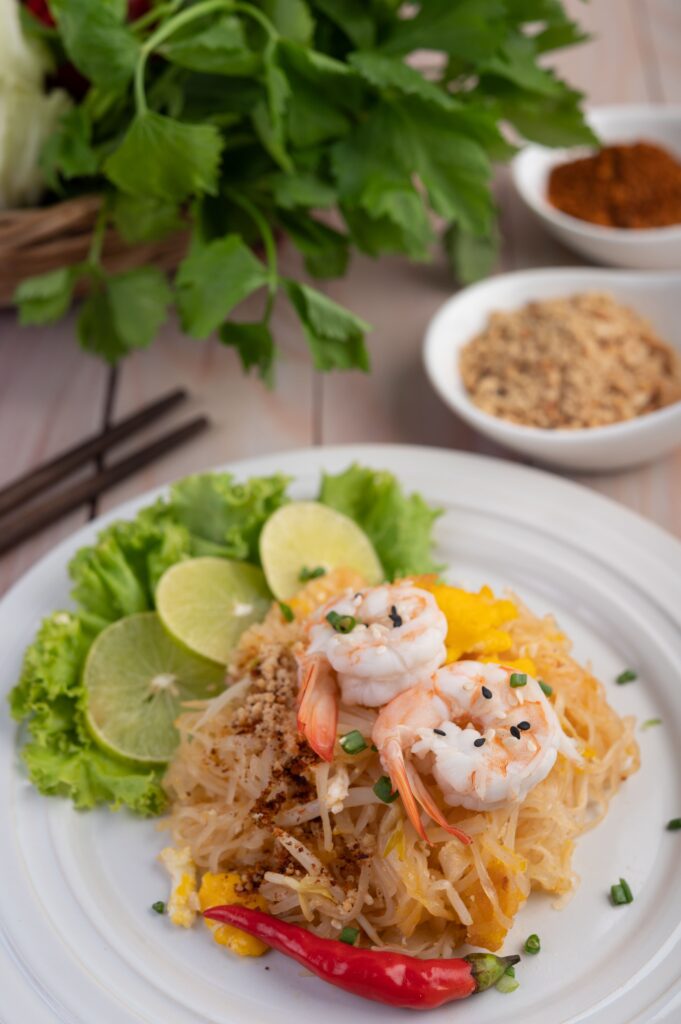
What Is Pad Thai?
Pad Thai is a celebrated noodle dish that captures the essence of Thai cuisine with its perfect balance of flavors, textures, and aromas. Known for its vibrant colors and tantalizing taste, Pad Thai has become a beloved staple not only in Thailand but also in kitchens and restaurants around the world. It’s a dish that beautifully blends simplicity with sophistication, making it a go-to meal for both casual diners and food connoisseurs alike.
The History of Pad Thai
Origin of Pad Thai in Thailand
Pad Thai has its roots in Thailand’s rich culinary heritage, with origins dating back to the early 20th century. It is believed to have gained prominence during the 1930s and 1940s when the Thai government, under Prime Minister Plaek Phibunsongkhram, promoted it as a national dish. The aim was to foster a sense of national identity while encouraging the use of locally available rice noodles to boost the economy. As a result, Pad Thai emerged as a symbol of Thai culture, uniting the nation with its universally appealing flavors.
Traditionally sold by street vendors, Pad Thai became a popular choice for its affordability, convenience, and satisfying nature. Over time, it evolved from humble street food to a dish served in fine dining establishments, showcasing its versatility and enduring appeal.
How It Became a Global Favorite
Pad Thai’s rise to international fame can be attributed to the global spread of Thai cuisine. As Thai restaurants opened across the world, Pad Thai often became the star attraction on menus, appealing to diners with its approachable yet exotic taste. Its adaptable nature—allowing for vegetarian, vegan, or gluten-free variations—further contributed to its global popularity. Today, Pad Thai is synonymous with Thai cuisine and continues to delight people of all ages and cultural backgrounds.
Key Ingredients That Define Pad Thai
Explanation of the Main Ingredients
The magic of Pad Thai lies in its thoughtfully chosen ingredients, each playing a crucial role in creating its signature flavor profile:
- Rice Noodles: Soft, flat noodles are the foundation of Pad Thai, providing a satisfying texture and a neutral base to absorb the flavors of the sauce.
- Tamarind Paste: This tangy ingredient adds a distinct sour note, balancing the sweetness and saltiness of the dish.
- Fish Sauce: A key component of Thai cooking, fish sauce contributes a savory, umami depth that enhances the dish’s complexity.
- Palm Sugar: This unrefined sugar lends a natural sweetness, harmonizing the bold and tangy flavors.
- Eggs: Scrambled eggs add richness and help bind the noodles with the sauce.
- Proteins: Traditional options include shrimp, chicken, or tofu, catering to diverse dietary preferences.
- Vegetables and Garnishes: Bean sprouts, scallions, crushed peanuts, and lime wedges not only provide freshness and crunch but also enhance the dish’s visual appeal.
Importance of the Balance Between Sweet, Sour, Salty, and Umami
One of the hallmarks of Pad Thai is its masterful balance of sweet, sour, salty, and umami flavors. Each bite delivers a symphony of taste sensations, with no single flavor overpowering the others. This balance is achieved by adjusting the proportions of tamarind paste, fish sauce, and palm sugar in the sauce, ensuring a well-rounded and satisfying dish. Lime juice and chili flakes can be added for extra brightness and heat, allowing diners to customize their Pad Thai according to their preferences.
By understanding these key elements, you’ll gain a deeper appreciation for the artistry behind Pad Thai and be better equipped to recreate its authentic taste in your own kitchen.
Here’s an expanded version of the “Essential Ingredients for the Perfect Pad Thai” section:
Essential Ingredients for the Perfect Pad Thai
Creating the perfect Pad Thai starts with selecting the right ingredients. While traditional recipes use specific staples, substitutions and variations allow for flexibility, catering to dietary preferences and ingredient availability. Whether you’re a purist or looking to adapt the dish, understanding these essentials is key to achieving authentic flavors.
Traditional Ingredients
Protein Options: Shrimp, Chicken, Tofu
Pad Thai is highly versatile, offering a variety of protein options to suit individual tastes:
- Shrimp: The classic choice for Pad Thai, shrimp provides a juicy, slightly briny flavor that pairs beautifully with the dish’s tangy and sweet notes.
- Chicken: A hearty alternative, chicken adds a familiar and comforting element to the dish. Thinly sliced or shredded chicken breast works best to blend seamlessly with the noodles.
- Tofu: A great vegetarian option, tofu absorbs the flavors of the sauce and adds a delightful texture. Firm tofu is ideal for stir-frying, ensuring it holds its shape and offers a satisfying bite.
Vegetables: Bean Sprouts, Scallions
Fresh vegetables not only enhance the texture of Pad Thai but also contribute to its vibrant appeal:
- Bean Sprouts: These crunchy sprouts provide a refreshing contrast to the tender noodles and a burst of hydration with every bite.
- Scallions: Chopped scallions bring a mild, onion-like flavor and a pop of green color, elevating the dish’s presentation and taste.
Garnishes: Peanuts, Lime Wedges, and Chili Flakes
No Pad Thai is complete without its signature garnishes:
- Peanuts: Crushed peanuts add a nutty crunch that complements the dish’s soft noodles.
- Lime Wedges: A squeeze of lime juice brightens the flavors, enhancing the tangy elements of the sauce.
- Chili Flakes: For those who enjoy a bit of heat, chili flakes allow diners to adjust the spice level to their preference.
Substitutions and Variations
Pad Thai is adaptable, making it possible to enjoy this classic dish regardless of dietary restrictions or ingredient availability:
Vegan and Vegetarian Alternatives
- Replace fish sauce with soy sauce or tamari mixed with a small amount of seaweed to mimic the umami depth.
- Use tofu or tempeh as the primary protein.
- Add mushrooms or extra vegetables like bell peppers, broccoli, or carrots for more variety and texture.
Gluten-Free Substitutes for Tamarind and Soy Sauce
- Opt for gluten-free tamari instead of soy sauce.
- If tamarind paste is unavailable, use a combination of lime juice and brown sugar as a substitute, though the flavor will differ slightly.
These substitutions allow those with dietary preferences or allergies to enjoy the dish without compromising on taste.
Where to Buy Authentic Ingredients
Finding authentic ingredients is crucial for recreating the rich and balanced flavors of traditional Pad Thai. Here are some tips for sourcing them:
Local Asian Markets
- Asian grocery stores are the best places to find authentic tamarind paste, fish sauce, rice noodles, and palm sugar. These stores often carry brands directly imported from Thailand, ensuring quality and authenticity.
Supermarkets
- Many mainstream supermarkets now have an international foods section where you can find rice noodles, soy sauce, and even pre-made Pad Thai sauces.
Online Stores
- Websites like Amazon, Thai grocery sites, or specialty food retailers offer a wide range of Thai ingredients. Look for brands like Mae Ploy, Pantai, or Tiparos for authentic sauces and seasonings.
- Online shopping also allows you to stock up on harder-to-find items like tamarind paste and palm sugar, ensuring you’re prepared for future Pad Thai cravings.
Fresh Produce
- For fresh items like bean sprouts, scallions, and lime, local farmers’ markets or standard grocery stores are great options.
By sourcing high-quality ingredients, whether locally or online, you can ensure your Pad Thai achieves the authentic taste and texture that makes it such a beloved dish.

Step-by-Step Recipe for Beginners
Cooking Pad Thai may seem daunting at first, but breaking it down into manageable steps makes it approachable for even novice cooks. By focusing on preparation and understanding the cooking process, you’ll achieve a flavorful, authentic dish that rivals your favorite Thai restaurant.
Preparation: Setting Up for Success
Importance of Mise en Place: Prepping Noodles, Sauces, and Proteins
Mise en place, a French term meaning “everything in its place,” is crucial when making Pad Thai. This dish cooks quickly, so having all your ingredients prepped and ready ensures a seamless cooking process.
- Chop and measure: Slice proteins, chop vegetables, and crush peanuts in advance.
- Prepare the sauce: Mix tamarind paste, fish sauce, palm sugar, and any other liquid ingredients in a bowl, so it’s ready to pour into the pan when needed.
- Arrange everything near your stove for easy access.
Soaking and Draining Rice Noodles
Rice noodles are the foundation of Pad Thai, but they require careful preparation:
- Soaking: Place the noodles in warm water for 30–40 minutes until they are pliable but not fully cooked. Avoid boiling them as it can lead to overcooked, mushy noodles.
- Draining: Once softened, drain the noodles thoroughly and set them aside. Lightly toss them with a bit of oil to prevent sticking.
Cooking Instructions (H3)
1. Cooking the Protein
- Heat a large wok or skillet over medium-high heat. Add a small amount of oil and let it heat until shimmering.
- Add your chosen protein (shrimp, chicken, or tofu) and stir-fry for 2–3 minutes until fully cooked. Remove and set aside to prevent overcooking.
2. Preparing the Sauce
- In the same pan, add a bit more oil and pour in the pre-mixed sauce. Stir gently and let it simmer for 1–2 minutes. This allows the sugar to dissolve and the flavors to meld.
- If the sauce seems too thick, add a splash of water to thin it out.
3. Combining Noodles and Toppings
- Add the soaked noodles to the pan with the sauce and toss to coat evenly. Cook for 2–3 minutes, stirring constantly to prevent sticking.
- Push the noodles to one side of the pan and crack an egg into the empty space. Let it set slightly, then scramble it and mix it into the noodles.
- Return the cooked protein to the pan and add vegetables like bean sprouts and scallions. Stir-fry for an additional 1–2 minutes until everything is heated through.
- Adjust seasoning to taste with additional lime juice, chili flakes, or fish sauce as desired.
Common Mistakes to Avoid
Overcooking Noodles
- Rice noodles are delicate and can quickly turn mushy if overcooked. Soaking them until just pliable and finishing their cooking in the sauce ensures they retain their texture.
Using Too Much Oil
- While stir-frying requires some oil, overdoing it can make the dish greasy. Use just enough to coat the pan and facilitate even cooking.
Tips for Perfecting Your Pad Thai
Even with the best recipe, the magic of Pad Thai often lies in the small details. These tips will help you elevate your dish, ensuring a restaurant-quality experience in your own kitchen.
Flavor Balancing
Adjusting Sweetness, Sourness, and Saltiness to Taste
One of the hallmarks of a perfect Pad Thai is its harmonious balance of sweet, sour, salty, and umami flavors. To achieve this:
- Sweetness: Add palm sugar (or brown sugar as a substitute) gradually to balance the tangy tamarind paste. A little sweetness enhances the depth of flavor without overpowering the dish.
- Sourness: Tamarind paste provides the essential tanginess, but you can amplify it with a squeeze of fresh lime juice if desired.
- Saltiness: Fish sauce is the primary source of saltiness in Pad Thai. Taste as you go and adjust to avoid an overly salty dish. For a vegetarian option, soy sauce or tamari can replicate this flavor.
How to Use Lime and Chili for Customization
- Lime: Serve lime wedges on the side so diners can add a burst of freshness to their taste. Lime also enhances the dish’s overall brightness.
- Chili: Offer chili flakes or chili oil on the side to let each person customize the spice level. Adding heat gradually ensures it complements rather than overwhelms the other flavors.
Cooking Tools for Best Results
Ideal Wok or Pan for Stir-Frying
A wok is the traditional and ideal tool for making Pad Thai. Its high, sloping sides allow for:
- Quick and even heat distribution.
- Easy tossing and mixing of ingredients without spillage.
- The ability to cook on high heat for that signature smoky “wok hei” flavor.
When using a wok, ensure it’s well-seasoned if it’s carbon steel, or opt for a non-stick version for easier cleanup.
Alternatives If You Don’t Have a Wok
If a wok isn’t available, a large, heavy-bottomed skillet or frying pan works well:
- Use a pan with a wide surface area to allow for proper stirring and even cooking.
- Avoid overcrowding the pan, as this can cause ingredients to steam rather than stir-fry. Cook in batches if necessary.
Serving Suggestions
Presentation Tips: Garnishing with Peanuts and Lime
- Garnishes: Crushed peanuts add a delightful crunch, while fresh lime wedges provide a pop of color and zest. Sprinkle peanuts generously over the dish just before serving, and place lime wedges on the side for visual appeal.
- Layering: Arrange the noodles neatly in a serving bowl, then layer the garnishes (bean sprouts, scallions, and peanuts) on top to create an inviting presentation.
Best Side Dishes to Pair with Pad Thai
Pad Thai is a versatile main course that pairs well with a variety of side dishes to round out the meal:
- Thai Spring Rolls: Crispy vegetable or shrimp spring rolls with a tangy dipping sauce make an excellent appetizer.
- Tom Yum Soup: This spicy and sour Thai soup complements Pad Thai’s rich flavors beautifully.
- Papaya Salad (Som Tam): A refreshing green papaya salad balances the savory and sweet elements of Pad Thai.
- Steamed or Sticky Rice: For those with bigger appetites, a small side of rice can help soak up any leftover sauce.
The Best Pad Thai Recipe for Beginners: Easy and Flavorful

"This blog post guides beginners through making authentic Pad Thai at home with a simple, step-by-step recipe. It covers essential ingredients, cooking tips, and techniques to balance flavors perfectly. Readers will also learn how to adapt the dish to dietary preferences, avoid common mistakes, and enjoy a restaurant-quality meal. Perfect for anyone looking to explore Thai cuisine with ease."
Frequently Asked Questions
Pad Thai is a globally loved dish, but beginners and enthusiasts often have questions about its nutritional profile, preparation, and storage. Here are answers to some of the most common queries to help you enjoy your Pad Thai to the fullest.
Is Pad Thai Healthy?
Nutritional Overview of the Dish
Pad Thai is a balanced dish that includes carbs (from rice noodles), proteins (from shrimp, chicken, or tofu), and vegetables (such as bean sprouts and scallions). However, its nutritional value depends on the ingredients and portions used:
- Calories: A standard serving of Pad Thai typically contains 300–500 calories.
- Macronutrients: The dish provides a good mix of carbohydrates, protein, and healthy fats (from peanuts).
- Micronutrients: Vegetables in Pad Thai add essential vitamins and minerals, while lime provides a dose of vitamin C.
However, traditional recipes can be high in sodium (from fish sauce and soy sauce) and sugar (from palm sugar).
Tips for Making It Lighter and Healthier
- Reduce Oil: Use a non-stick pan and limit the amount of oil used for stir-frying.
- Swap Noodles: Replace traditional rice noodles with whole-grain or zucchini noodles for a lower-carb alternative.
- Boost Vegetables: Add extra veggies like bell peppers, broccoli, or snap peas to increase fiber and nutrients.
- Control Sodium: Opt for low-sodium soy sauce or fish sauce and taste-test before adding more.
- Limit Sugar: Reduce the amount of palm sugar in the sauce or substitute it with a natural sweetener like honey or stevia.
By making these adjustments, you can enjoy Pad Thai as a wholesome and nutritious meal without compromising on flavor.
Can I Make Pad Thai Ahead of Time?
Storage Tips for Leftovers
While Pad Thai is best enjoyed fresh, leftovers can be stored and enjoyed later with proper handling:
- Refrigeration: Store cooked Pad Thai in an airtight container and refrigerate for up to 2–3 days. Ensure the dish cools completely before storing to prevent condensation and sogginess.
- Freezing: If you want to keep Pad Thai for longer, freeze it in individual portions. Use freezer-safe containers or resealable bags, removing as much air as possible to avoid freezer burn.
Reheating Methods to Retain Flavor and Texture
Reheating Pad Thai requires care to prevent it from becoming dry or mushy:
- Stovetop: Heat a non-stick pan over medium heat, adding a splash of water or oil to rehydrate the noodles. Stir gently until warmed through.
- Microwave: Transfer Pad Thai to a microwave-safe dish, cover with a damp paper towel, and heat in short intervals (30–45 seconds), stirring in between to ensure even heating.
- Avoid Overheating: Prolonged reheating can make the noodles overly soft and compromise the texture. Heat just until warm to preserve the dish’s original quality.
By following these tips, you can prepare Pad Thai ahead of time or make the most of your leftovers without sacrificing its flavor and appeal.
Conclusion
Pad Thai is more than just a dish—it’s a culinary journey that captures the vibrant essence of Thai cuisine. This beginner-friendly recipe simplifies the process, breaking it down into manageable steps so that anyone, regardless of their cooking experience, can recreate this iconic dish at home. If you enjoyed learning about Pad Thai, you might also like our guide to Thai cooking essentials or discover how to make Tom Yum Soup, another classic Thai dish. We’d love to hear about your Pad Thai adventure! Did you stick to the classic recipe, or did you add your own twist? Share your experiences, tips, and any questions in the comments below. Let’s start a conversation and inspire each other to explore the delicious world of homemade Pad Thai. Happy cooking!
By following this recipe, you’ll not only master the basics of Pad Thai but also gain a deeper appreciation for the artistry involved in crafting this beloved dish. The flexibility of Pad Thai allows you to adapt it to your preferences, whether that means swapping proteins, adjusting spice levels, or experimenting with alternative ingredients to suit your dietary needs.
Now, it’s time to roll up your sleeves, gather your ingredients, and experience the joy of making Pad Thai at home. Whether you’re cooking for yourself, your family, or friends, this dish is sure to impress and bring a taste of Thailand right to your table.
We’d love to hear about your Pad Thai adventure! Did you stick to the classic recipe, or did you add your own twist? Share your experiences, tips, and any questions in the comments below. Let’s start a conversation and inspire each other to explore the delicious world of homemade Pad Thai. Happy cooking!

